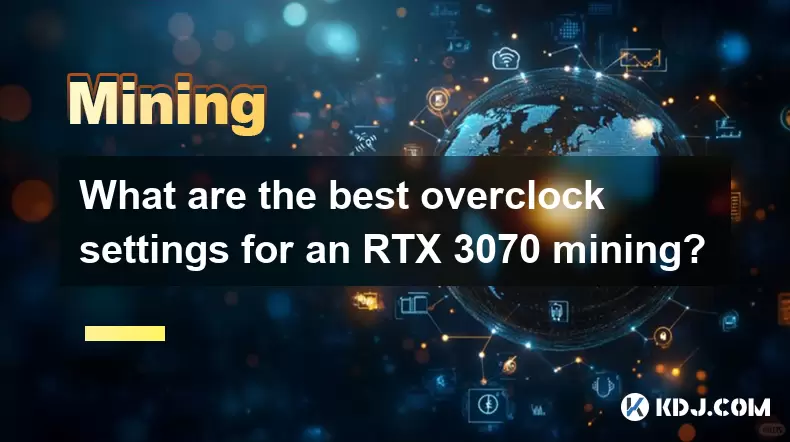-
 Bitcoin
Bitcoin $118,698.3676
0.16% -
 Ethereum
Ethereum $3,428.4877
5.97% -
 XRP
XRP $3.2496
9.52% -
 Tether USDt
Tether USDt $1.0002
0.00% -
 BNB
BNB $725.6930
4.36% -
 Solana
Solana $174.8923
4.52% -
 USDC
USDC $0.9997
-0.02% -
 Dogecoin
Dogecoin $0.2139
6.02% -
 TRON
TRON $0.3155
4.62% -
 Cardano
Cardano $0.8045
7.12% -
 Hyperliquid
Hyperliquid $46.6582
-1.72% -
 Stellar
Stellar $0.4676
0.80% -
 Sui
Sui $4.0143
0.38% -
 Chainlink
Chainlink $17.1546
2.97% -
 Hedera
Hedera $0.2458
3.27% -
 Bitcoin Cash
Bitcoin Cash $496.5967
-0.06% -
 Avalanche
Avalanche $22.8813
3.13% -
 Shiba Inu
Shiba Inu $0.0...01439
3.42% -
 UNUS SED LEO
UNUS SED LEO $8.8389
0.42% -
 Toncoin
Toncoin $3.2113
2.82% -
 Litecoin
Litecoin $101.2646
4.24% -
 Polkadot
Polkadot $4.2262
2.32% -
 Monero
Monero $340.4295
2.92% -
 Pepe
Pepe $0.0...01365
2.92% -
 Uniswap
Uniswap $8.9702
-2.78% -
 Bitget Token
Bitget Token $4.7675
2.00% -
 Dai
Dai $0.9998
-0.02% -
 Ethena USDe
Ethena USDe $1.0003
-0.04% -
 Aave
Aave $324.6394
-2.11% -
 Bittensor
Bittensor $433.6051
-0.88%
What are the best overclock settings for an RTX 3070 mining?
Overclocking the RTX 3070 can boost mining hashrate, but requires careful tuning of core/memory clocks, power limits, and cooling for stability and efficiency.
Jul 17, 2025 at 06:08 pm

Understanding Overclocking in the Context of Mining
Overclocking refers to pushing a graphics card beyond its factory-set limits to achieve higher performance. In the context of cryptocurrency mining, this means increasing hashrate while maintaining stability and managing power consumption. For the RTX 3070, overclocking can significantly improve mining efficiency, especially when tuned correctly for algorithms like KawPow (used by Ravencoin) or ProgPoW.
It’s important to understand that overclock settings vary depending on the brand of the RTX 3070 you're using—whether it's an ASUS, MSI, or EVGA model—as each manufacturer implements different cooling solutions and base clocks. The goal is to find the sweet spot between hashrate gains, temperature control, and power draw.
Core Clock Adjustments for Optimal Performance
The core clock directly affects how fast the GPU processes data, which translates into faster hashing. Most miners adjust this parameter first. A safe starting point for the RTX 3070 is to increase the core clock by +100 MHz to +200 MHz using tools like MSI Afterburner.
- Ensure that voltage control is unlocked if you're aiming for aggressive tuning.
- Monitor temperatures closely; anything above 75°C may require adjustments to fan curves or ambient cooling.
- Stability testing should be done over several hours to ensure no crashes or errors occur during mining sessions.
Some miners report optimal results at +150 MHz core clock combined with memory tweaks, but individual GPU silicon quality plays a major role here.
Memory Clock Tuning for Higher Hashrates
For many mining algorithms, especially those that are memory-intensive like Ethash, optimizing memory clock speeds can yield significant improvements. With the RTX 3070, memory overclocking is often more impactful than core clock adjustments.
A common practice is to start with +500 MHz to +750 MHz on GDDR6X memory modules. However:
- Not all memory chips respond well to high overclocks; some may crash or fail under stress.
- Use memory timing tweaks cautiously unless you have experience with low-level GPU tuning.
- Always test memory stability using tools like TechPowerUp GPU-Z or built-in mining software benchmarks.
Many miners settle around +600 MHz memory clock as a reliable balance between performance and reliability.
Power Limit and Fan Curve Optimization
Adjusting the power limit allows you to either reduce power consumption or allow more headroom for overclocking. On the RTX 3070, lowering the power limit to 70%–80% while applying core and memory overclocks often results in better performance per watt.
- Reducing power limit helps lower temperatures and overall electricity costs.
- Combine this with a custom fan curve that keeps GPU temperatures below 70°C during full load.
- Tools like NBMiner or T-Rex Miner offer detailed logs that help monitor power draw and thermal behavior.
Avoid running your GPUs at 100% power limit for extended periods without proper cooling, as this can shorten their lifespan and lead to instability.
Software Tools and Mining Software Compatibility
Several software tools are essential for fine-tuning the RTX 3070 for mining:
- MSI Afterburner: Offers real-time adjustment of clocks, voltage, and fan controls.
- NVIDIA Inspector: Useful for advanced users who want to modify BIOS or create custom profiles.
- Mining Benchmarks: Tools like NiceHash QuickMiner or NBMiner help assess hashrate improvements after tuning.
Ensure your mining software supports the latest NVIDIA drivers optimized for mining. Older versions might not fully utilize the potential of the RTX 3070, especially when dealing with newer algorithms or DAG file sizes.
Frequently Asked Questions
Q: Can I damage my RTX 3070 by overclocking it for mining?
While overclocking increases wear and tear on components, staying within reasonable limits and ensuring adequate cooling minimizes risks. Avoid excessive voltage adjustments unless experienced.
Q: Why does my hashrate drop after overclocking the RTX 3070?
This usually happens due to unstable memory timings, overheating, or insufficient power delivery. Check temperature thresholds, reset memory clocks incrementally, and ensure power supply units are sufficient.
Q: Is it better to overclock multiple RTX 3070 cards individually or apply the same profile across all?
Each GPU behaves differently due to manufacturing variances. It’s best to tune each card individually for maximum efficiency and stability.
Q: What is the ideal temperature range for an overclocked RTX 3070 used in mining?
Maintaining temperatures between 55°C and 70°C is ideal. Anything consistently above 75°C may indicate inadequate cooling or airflow.
Disclaimer:info@kdj.com
The information provided is not trading advice. kdj.com does not assume any responsibility for any investments made based on the information provided in this article. Cryptocurrencies are highly volatile and it is highly recommended that you invest with caution after thorough research!
If you believe that the content used on this website infringes your copyright, please contact us immediately (info@kdj.com) and we will delete it promptly.
- Silver Breaks 14-Year High: What's Driving the Rally?
- 2025-07-17 22:50:13
- Ozak AI, Stellar (XLM), and Solana (SOL): The New Crypto Watchlist Stars
- 2025-07-17 23:50:12
- Grok AI, Meme Coins, and Dogecoin: What's the Hype in 2025?
- 2025-07-17 23:10:11
- Meme Coins, AI Tokens & Whale Accumulation: What's Hot in Crypto?
- 2025-07-17 23:15:11
- C2 Blockchain, DOG Coins, and Acquisition: A Meme-Native Bitcoin Asset
- 2025-07-17 20:30:12
- DeFi Evolution: Hyperion, HYPE Token, and the Hyperliquid Ecosystem
- 2025-07-17 21:30:12
Related knowledge

How are crypto mining profits taxed?
Jul 14,2025 at 12:28am
Understanding Cryptocurrency Mining and TaxationCryptocurrency mining involves validating transactions on a blockchain network and earning rewards in ...

How to keep a mining rig cool
Jul 12,2025 at 01:42pm
Understanding the Importance of Cooling in Mining RigsCryptocurrency mining is an intensive process that places heavy demand on hardware components, p...

How to mine crypto on a gaming PC
Jul 16,2025 at 12:00pm
What is Crypto Mining on a Gaming PC?Crypto mining involves using your computer's processing power to validate transactions on a blockchain network. A...

How to set up a crypto miner
Jul 16,2025 at 09:14am
Understanding Ethereum Gas Fees: What Are They and How Do They Work?Ethereum gas fees are a fundamental aspect of the network, representing the cost r...

Can you mine crypto on a laptop?
Jul 16,2025 at 02:21am
Is It Feasible to Mine Cryptocurrency on a Laptop?Mining cryptocurrency on a laptop is technically possible, but feasibility depends heavily on the ha...

Is crypto mining worth it?
Jul 16,2025 at 01:21am
Understanding the Basics of Crypto MiningCrypto mining refers to the process of validating transactions on a blockchain network by solving complex mat...

How are crypto mining profits taxed?
Jul 14,2025 at 12:28am
Understanding Cryptocurrency Mining and TaxationCryptocurrency mining involves validating transactions on a blockchain network and earning rewards in ...

How to keep a mining rig cool
Jul 12,2025 at 01:42pm
Understanding the Importance of Cooling in Mining RigsCryptocurrency mining is an intensive process that places heavy demand on hardware components, p...

How to mine crypto on a gaming PC
Jul 16,2025 at 12:00pm
What is Crypto Mining on a Gaming PC?Crypto mining involves using your computer's processing power to validate transactions on a blockchain network. A...

How to set up a crypto miner
Jul 16,2025 at 09:14am
Understanding Ethereum Gas Fees: What Are They and How Do They Work?Ethereum gas fees are a fundamental aspect of the network, representing the cost r...

Can you mine crypto on a laptop?
Jul 16,2025 at 02:21am
Is It Feasible to Mine Cryptocurrency on a Laptop?Mining cryptocurrency on a laptop is technically possible, but feasibility depends heavily on the ha...

Is crypto mining worth it?
Jul 16,2025 at 01:21am
Understanding the Basics of Crypto MiningCrypto mining refers to the process of validating transactions on a blockchain network by solving complex mat...
See all articles

























































































